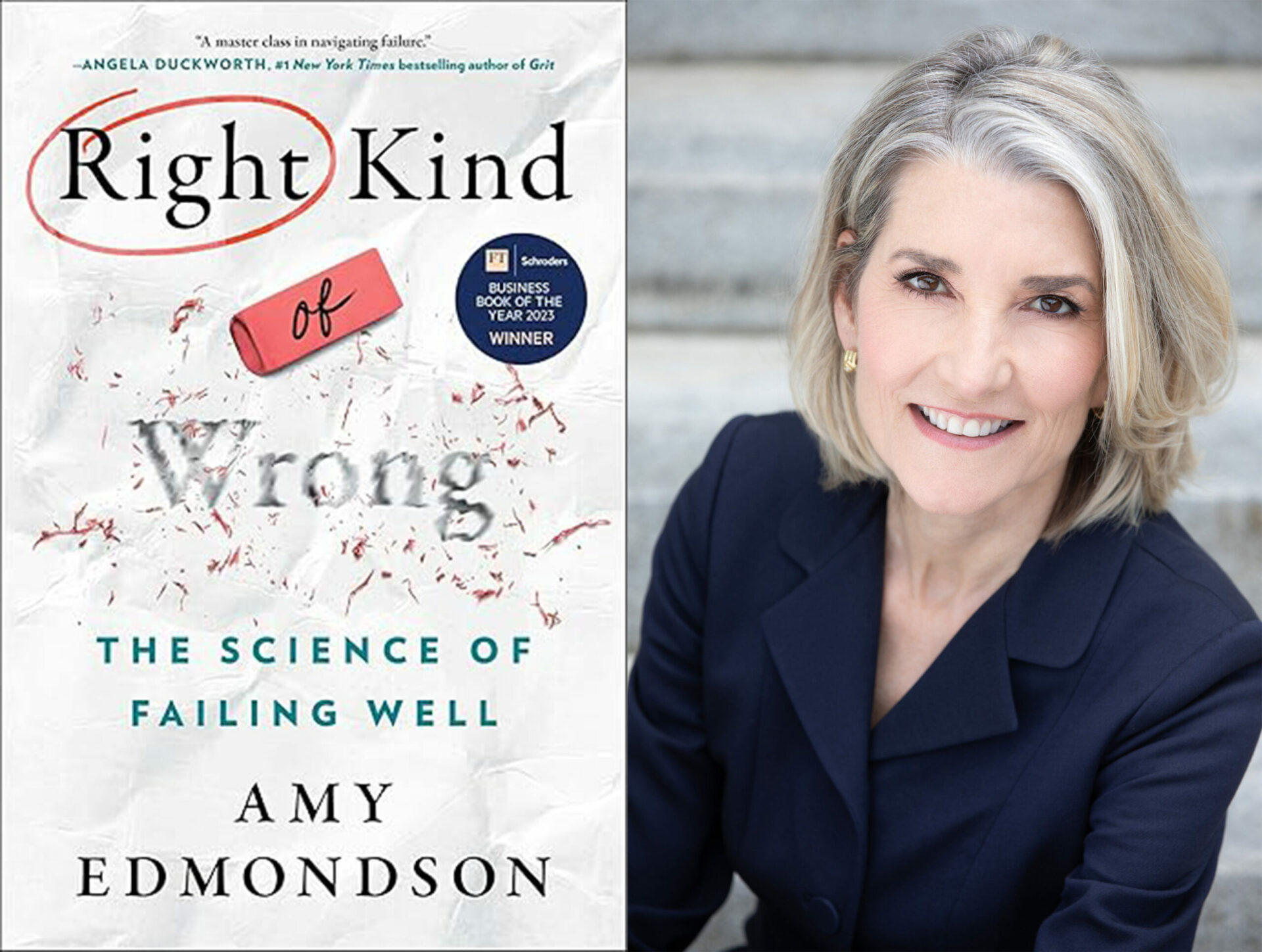In a startup culture where “fail fast” is the unofficial motto, Amy Edmonson’s Right Kind of Wrong: The Science of Failing Well couldn’t be more timely. Edmonson’s latest research on psychological safety and leadership is a much-needed resource for any business leader navigating innovation and risk. If you’re leading a team or organisation, this book is a must-read. As the director of a digital agency, I appreciated the practical application of Edmonson’s theories on intelligent failure and how to create an environment that supports it. The concepts in this book are easily applied to our web development and digital marketing work, and the principles translate well to everyday life as well. Right Kind of Wrong is a valuable resource for anyone looking to create an environment where failure is a learning opportunity, not a career-ender.
The Power of Failure
Failure is a natural byproduct of learning and growth. How we fail is up to us. In Right Kind of Wrong, leadership and psychological safety expert Amy Edmonson writes that failure is not the enemy. In fact, she says we should aim for the “right kind of wrong” failure – a failure that leads to learning and improvement. Edmonson explains that we have two main failure cultures: one that is hyper-risk averse and the other that promotes fast and frequent failure. Both are problematic because they lack nuance and fail to distinguish helpful failure from harmful failure.
We fail in different ways and to different degrees. Edmonson explains that we have a basic capacity to assess and plan for risk, avoiding failure when possible. We also face complex situations where failure is inevitable due to circumstances outside of our control. And then there’s intelligent failure – that’s the kind that can harm us but can also provide invaluable learning and growth opportunities.
Understanding the different types of failure is the first step toward embracing failure and eliminating useless failure. We must be willing to be human and acknowledge that we’re fallible. We must also see failure for what it is: a natural part of the learning process.
What I liked about the book is Edmonson’s practical application and roadmap for distinguishing between these types of failure and how to create an environment that supports intelligent failure. We’re all about creating an environment that learns and adapts, and this book provides a much-needed guide on how to do it.
Relevance to Digital Innovation
For us in the digital space:
- Agile Development Practices The book’s emphasis on quick, smart experimentation matches our development methodologies with new insights on sprint retrospectives and iteration cycles.
- Client Relationships Edmondson’s framework helps you have hard conversations about project pivots and experimental features and turn potential disappointments into learning opportunities.
- Team Culture: The author’s research on psychological safety gives you practical ways to build teams that can innovate without fear of consequence.
Failure is Not the Enemy
We fear failure because we think it says something about what we are as people. It doesn’t. Failure is an opportunity to learn and build the resilience that leads to success. I like how the book frames failure in this way. We must see failure as a learning opportunity, and it starts with a growth mindset.
I hire geniuses, and the growth mindset and failure ethos I’ve written about previously is the only way we’re going to be able to innovate and adapt fast enough to have any chance of success. I agree with the author that fear of failure is harmful. We need to embrace failure and be the kind of people who can fail well.
What I liked most about this book is the practical application and examples shared:
- How to choose which risks to take
- How to create systems that avoid basic failures and support intelligent experimentation
- How to build a learning organisation that can turn failure into a competitive advantage
Amy also provides real-world examples to illustrate her points. I appreciated how the book is able to break down the complex into manageable pieces and explain it in a way that’s easy to apply to our everyday work.
I appreciate the theoretical framework and research that supports the book, but it would be interesting to see how it applies to the challenges of service businesses. Our business is messy because we partner with clients with a level of risk aversion. However, that’s also an opportunity to be creative in how we apply Edmonson’s principles. We should focus on basic failure (avoidable harm) and build systems that mitigate that type of failure so we can improve processes.
Practical Application: How I Can Apply It in My Business
As a digital agency, I can implement Edmonson’s principles by:
- Creating an environment that learns and adapts faster
- Having more honest conversations with clients about what experiments we can and can’t do
- Building our team’s problem-solving capabilities
- Focusing on basic failure (avoidable harm) and building systems that mitigate that type of failure
I gave this book 4 out of 5 stars in my GoodReads. It’s a research-based book, and I appreciate it. It’s not a gimmicky book full of buzzword bingo. It’s a must-read because it challenges your thinking about failure and provides a practical framework for creating an organisation that can learn and adapt. I recommend business leaders read it and think about how you can apply it to your business.
We don’t need to fail to succeed in digital innovation. We need to fail intelligently and be able to learn fast. Right Kind of Wrong by Amy Edmondson tells us how.




